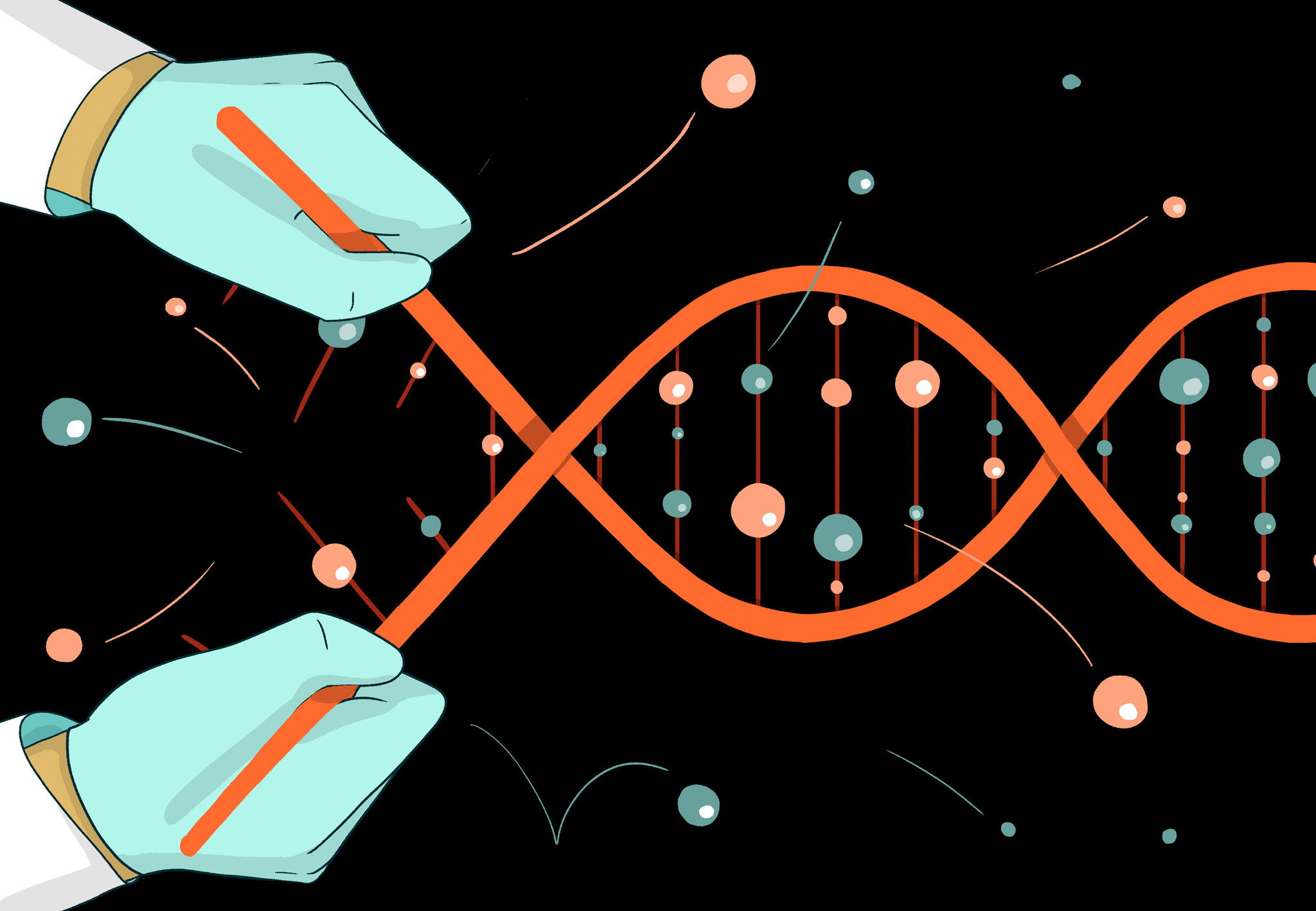It all began with bacteria: The observation and study of these single-celled organisms in the early 1980s allowed scientists to get a glimpse of the bacterial genome. In bacterial DNA, researchers found a class of repetitive nucleotide sequences, which they called Clusters of Regularly Interspaced Short Palindromic Repeats, or CRISPR.
This finding was the basis of what would become CRISPR-Cas9, the gene editing tool that won this year’s Nobel Prize in Chemistry, awarded to Dr. Emmanuelle Charpentier and Dr. Jennifer Doudna, who began their work in 2011.
Like human cells, bacteria have the ability to recognize invading pathogens that attack their DNA. Unlike human cells, which have a variety of ways to kill viruses or inhibit their replication, some bacteria incorporate a part of the virus genome into their own DNA, using it as a guide to detect DNA from similar viruses during subsequent infections. These viral segments are known as “spacers” and are integrated into the bacteria’s CRISPR sequences for later use.
The other component of the CRISPR system is Cas9, a bacterial enzyme that cleaves foreign DNA marked by CRISPR sequences. If the bacterial cell detects the same virus a second time, a copy of the viral DNA is transcribed to the Cas9 enzyme, giving it a molecular “clue” of what to search for in the cell. Once it matches the clue sequence to the invader’s DNA, Cas9 acts like a pair of scissors, cutting the viral DNA and preventing reinfection.
While working with one bacterial species, Charpentier found RNA sequences which play a key role in the cleavage mechanism of CRISPR-Cas9. In collaboration with Doudna, they succeeded in recreating the Cas9’s genetic scissors in a test tube, showing that upon fusing an RNA transcript (also called a “guide RNA”) with Cas9, they could develop a simplified system that reproduces that same cleavage mechanism.
Over the next 10 years, Charpentier and Douda refined their method of gene editing, allowing them to excise and insert DNA sequences of their choosing. In an interview with The McGill Tribune, Dr. Yann Joly, a bioethicist and assistant professor in McGill’s Department of Human Genetics, commented that their discovery would revolutionize the idea of gene editing.
“Charpentier and Doudna used this knowledge about an obscure bacterial immune mechanism (CRISPR) and transposed it into a tool that can simply and cheaply edit the genomes of everything living organism: Human, animal, or vegetable,” Joly said.
The advantage of this method is that it enables not only cutting, but also the pasting of new DNA sequences at the site of the excision. Guide RNAs can also provide a template for repairing broken DNA.
“Many genome editors existed before CRISPR, but using them was time consuming, cumbersome, and expensive,” Joly said.
A technology that has the power to edit the genetic makeup of humans raises ethical concerns.
“Because CRISPR-Cas9 is so easy to access and use by anyone with [any] scientific knowledge, it means that the technology is also vulnerable to misuse by biohackers and bioterrorists,” Joly said. “Given potential limitations and [possible] side-effects of the technology, along with the potential for editing the germline, the consequences could be far reaching. Such misuses are also very difficult to prevent through traditional ethic[s] policies and regulations.”
One current debate discusses the extent to which CRISPR-Cas9 should be regulated in clinical research involving human subjects. Although there are legal implications, this discovery has potential for revolutionizing the field of gene therapy and targeted medicine. Regardless, CRISPR-Cas9 still has a long way to go, both mechanically and ethically, before its use can become widespread.
“The potential [uses of CRISPR-Cas9] in medicine and agriculture [are] extremely promising but the technology still needs a lot of fine tuning,” Joly said. “Research and experiments on computer models and animal models [remain important to understanding] off-target effects, [such as] mosaicism and unknown long-term effects.”










Can this CRISPR-CAS9, therapy useful in treating NMOSD, disease? Can CRISPR – CAS9, cissor remove AQUAPORIN – 4, ANTIBODY and help permenanat cure of NMOSD?. KINDLY ADVISED AND HELP US.